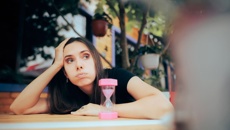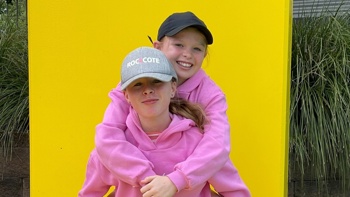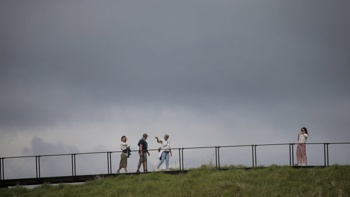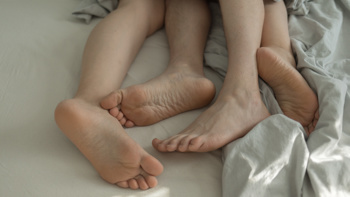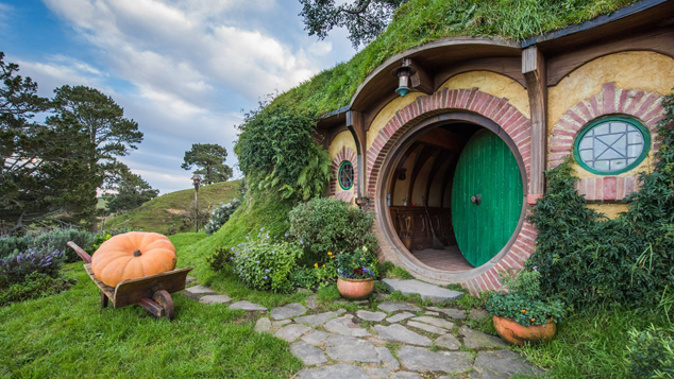
The lush emerald pastures and roly-poly hills surrounding Matamata are happily home to Hobbiton, the ultimate cinematic shrine for set-jetters in New Zealand. Like a third of all visitors, I have never watched or read an entire story or movie, from either trilogy. But there’s no mistaking what a hold Hobbiton has on starry-eyed Tolkien junkies. A journey here has acquired the stature of a pilgrimage. From the entrance, the air of pent-up excitement amongst the queuing fans was electric, as they lined up to board their appointed bus, which whisked us into the heart of the sprawling movie set.
I had dire visions of being poked, prodded and punctured by swarms of selfie sticks jostling for the perfect shot during the visit. But thankfully, the two hour-long movie set tours are a tightly-controlled, well-oiled machine, with just a couple of dozen visitors in each walking group, departing every thirty minutes. 14 nationalities were represented in my group alone, graphically underscoring Hobbiton’s global pulling power.
To reach the movie set entails a short drive by bus across the Alexander family’s farmland on a private sealed road, which was built by the New Zealand Army to service the convoy of crew production vehicles and equipment. Sir Peter Jackson sweet-talked the then Prime Minister, Helen Clark, to approve the road’s construction. Rolling past fluffy white sheep nibbling on the lush hillside pastures is reminder amid all this film frenzy is a fully functioning farm.
As you probably know, the tiny village of Hobbiton, first created back in 1999, was all but demolished after the location shooting for The Lord of the Rings wrapped. But when Jackson returned to the farm to recreate the village for The Hobbit trilogy, the Alexander family convinced him to recreate Hobbiton with permanent materials that would stand the test of time. Alighting from the bus, the bright green grass is long and lush as we trundle down the muddy track to the first hobbit house, where ‘the Hobbiton effect” suddenly washes over me.
Unlike so many movie locations, Hobbiton casts you under its spell because it’s exactly the same as it appears on screen. It's all so sweet and tender, with washing hanging on a line near a chimney poking out of a grassy mound. Baskets are plump with pumpkins, while flowers and herbs have been hung up to dry by a round yellow door. As we walked down a gravelled path, some members of my group frothed with delight, recognising it as the spot where Frodo Baggins greeted Gandalf at the start of The Fellowship of the Ring.
And these tingly movie moments just kept on coming, as we strolled around the 44 hobbit houses that are strung around the hillsides, fizzing with excitement being photographed outside Bag End (Frodo and Bilbo's house with the green door), or sitting on the see-saw beneath The Party Tree, where Bilbo held his eleventy-first birthday. I was fully submerged in the fantasy-meets-reality world of Middle Earth. It’s little wonder that 450,000 visitors toured the movie set, last year alone.
The movie set sits on 12 acres of land and my charming guide, Kate, shared a constant flow of fascinating bite-sized nuggets about Hobbiton, its creation and on-going up-keep. An over-riding theme is the meticulous attention to detail that Jackson demanded. All of the farm’s livestock had to be removed when shooting took place, because they didn’t look English enough. Suffolk sheep, notable for their black faces and legs, were hauled up from the South Island to populate the pastures during shooting.
Real apple and pear trees were stripped of their leaves and fruit and replaced with plastic leaves and plums, even though they only featured for three seconds in the movie. A fake oak tree, created from silicon, was dressed with 200,000 fake leaves. Jackson didn’t like the colour of the leaves, so they were all re-painted by hand, even though the tree was only in shot for 10 seconds. Kate also revealed that moss and lichen was liberally deployed to give the movie-set’s fences a weathered, old look.
They created fake moss and lichen by blending woodchips, yoghurt and paint together. As they were during filming, the vegetable patches are still filled with super-sized plants so as the hobbits would look smaller. Technically, it is still an “active set,” and a team from Weta visit every six months to give it a touch up. The hanging clothes were deliberately made to hang on the line for up to two years, before being replaced. A full-time gardening team work daily on maintaining the picturesque appearance of the trees, flowers and lawn.
Winding our way around the narrow paths of the hills, Kate pointed out how the wealthier hobbits lived on the higher reaches. From here, the panoramic view across Hobbiton is sumptuous, reaching right across the lake to the stone bridge, the watermill and the Green Dragon Inn, which looked like a life-sized thatched cottage from my grandmother’s Lilliput Lane collection. This is where the tour concludes and where I marvelled the interiors of the inn, which were built exclusively for the movie set. The inn has been slavishly re-created down to every wood chip on the wall. (The original was built on a sound stage.)
Sir Peter Jackson’s art director, Brian Massey, ensured everything down to the mugs maintained complete faith with how The Green Dragon Inn was depicted onscreen. A trumph of expert craftsmanship, it’s a charmingly snug and toasty timbered environment, and the crackling open fire was an extra thrill to warm the cockles, on a chilly April day. Kate treated us to a complimentary drink, whether you want a traditional ale, cider or ginger beer. (Tea and coffee is also available.)
But all the brews are exclusively created for The Green Dragon Inn, by Good George Brewing, in Frankton, Hamilton. The Hobbit Southfarthing range features the Girdley Fine Grain Amber Ale; the Oatbarton Brew, which is a traditional English Ale; the Sackville Cider and the Frogmorton Ginger Beer – ideal for the designated driver and minors. Once again, the sensation of movie fantasy and reality seamlessly blended as one.
Maybe it was the ale, but as I re-boarded the bus to depart, I felt like I was stepping out of a movie. It really doesn’t matter whether you’re a film fanatic or not. Visiting Hobbiton gives you the chance to relish a remarkably tangible piece of living cinema history. Hobbiton was built to last 50 years. Salzburg has recently celebrated the 50th Anniversary of The Sound of Music. There’s no sign of that spectacular tourism love affair letting up in Salzburg, which like the Rings and the Hobbit, is a monumental gift that keeps on giving. www.hobbitontours.com
Treat yourself to a bumper self-drive escape. Thrifty Car Rental offers hot deals, swift service and an excellent fleet in handy locations, including Hamilton, Auckland, Rotorua, Taupo and Tauranga. Become a Blue Chip member for exclusive deals and lightning-fast pick-ups. AA Members can save up to 30% off the all-inclusive rental rates. www.thrifty.co.nz
Mike Yardley is our Travel Correspondent on Jack Tame Saturday Mornings.
Take your Radio, Podcasts and Music with you





